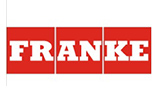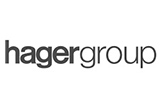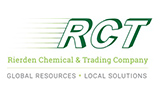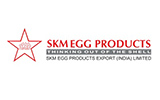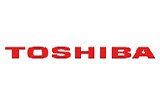CHAPTER 1: INTRODUCTION
1.1. Report description
1.2. Key benefits for stakeholders
1.3. Key market segments
1.4. Research methodology
1.4.1. Primary research
1.4.2. Secondary research
1.4.3. Analyst tools and models
CHAPTER 2: EXECUTIVE SUMMARY
2.1. Key findings
2.1.1. Top impacting factors
2.1.1.1. Increase in obese population
2.1.1.2. Growing health awareness among population
2.1.1.3. Rising raw material prices
2.1.1.4. Government regulations
2.1.1.5. Marketing and positioning strategies
2.1.2. Top investment pockets
2.2. CXO perspective
CHAPTER 3: MARKET OVERVIEW
3.1. Market definition and scope
3.2. Porter's five forces analysis
3.2.1. Bargaining power of suppliers
3.2.2. Bargaining power of buyers
3.2.3. Threat of substitution
3.2.4. Threat of new entrants
3.2.5. Intensity of competitive rivalry
3.3. Supply Chain Analysis
3.4. Market dynamics
3.4.1. Drivers
3.4.1.1. Increase in obese population
3.4.1.2. Unhealthy lifestyle
3.4.1.3. Rising disposable income
3.4.1.4. Government initiatives and awareness campaigns
3.4.1.5. Attractive marketing and promotion strategies
3.4.2. Restraints
3.4.2.1. Rising raw-material prices
3.4.2.2. Negative effects of ingredients used in low-calorie food & beverages
3.4.2.3. Government regulations
3.4.3. Opportunities
3.4.3.1. Untapped developing markets
3.4.3.2. Health and fitness consciousness
CHAPTER 4: GLOBAL WEIGHT LOSS AND WEIGHT MANAGEMENT DIET MARKET, BY PRODUCT TYPE
4.1. Overview
4.1.1. Market size and forecast, by product type
4.1.1.1. Low Salt Products
4.1.1.2. Low Carb/Sugar Products
4.1.1.3. Low Fat Products
4.2. Better for you
4.2.1. Key market trends, growth factors, and opportunities
4.2.2. Market size and forecast, by region
4.2.3. Market analysis, by country
4.3. Meal Replacement
4.3.1. Key market trends, growth factors, and opportunities
4.3.2. Market size and forecast, by region
4.3.3. Market analysis, by country
4.4. Weight loss supplement
4.4.1. Key market trends, growth factors, and opportunities
4.4.2. Market size and forecast, by region
4.4.3. Market analysis, by country
4.5. Green Tea
4.5.1. Key market trends, growth factors, and opportunities
4.5.2. Market size and forecast, by region
4.5.3. Market analysis, by country
4.6. Low calorie sweetener
4.6.1. Key market trends, growth factors, and opportunities
4.6.2. Market size and forecast, by region
4.6.2.1. Stevia
4.6.2.2. Aspartame
4.6.2.3. Sucralose
4.6.2.4. Saccharin
4.6.2.5. Others
4.6.3. Market analysis, by country
CHAPTER 5: GLOBAL WEIGHT LOSS AND WEIGHT MANAGEMENT DIET MARKET, BY SALES CHANNEL
5.1. Overview
5.1.1. Market size and forecast, by sales channel
5.2. Hypermarket/Supermarket
5.2.1. Key market trends, growth factors, and opportunities
5.2.2. Market size and forecast, by region
5.2.3. Market analysis, by country
5.3. Specialty Stores
5.3.1. Key market trends, growth factors, and opportunities
5.3.2. Market size and forecast, by region
5.3.3. Market analysis, by country
5.4. Pharmacies
5.4.1. Key market trends, growth factors, and opportunities
5.4.2. Market size and forecast, by region
5.4.3. Market analysis, by country
5.5. Online Channels
5.5.1. Key market trends, growth factors, and opportunities
5.5.2. Market size and forecast, by region
5.5.3. Market analysis, by country
5.6. Others
5.6.1. Key market trends, growth factors, and opportunities
5.6.2. Market size and forecast, by region
5.6.3. Market analysis, by country
CHAPTER 6: WEIGHT LOSS AND WEIGHT MANAGEMENT DIET MARKET, BY REGION
6.1. Overview
6.1.1. Market size and forecast, by region
6.2. North America
6.2.1. Key market trends, growth factors, and opportunities
6.2.2. Market size and forecast, by product type
6.2.3. Market size and forecast, by sales channel
6.2.4. Market analysis, by country
6.2.4.1. U.S.
6.2.4.1.1. Market size and forecast, by product type
6.2.4.1.2. Market size and forecast, by sales channel
6.2.4.2. Canada
6.2.4.2.1. Market size and forecast, by product type
6.2.4.2.2. Market size and forecast, by sales channel
6.2.4.3. Mexico
6.2.4.3.1. Market size and forecast, by product type
6.2.4.3.2. Market size and forecast, by sales channel
6.3. Europe
6.3.1. Key market trends, growth factors, and opportunities
6.3.2. Market size and forecast, by product type
6.3.3. Market size and forecast, by sales channel
6.3.4. Market analysis, by country
6.3.4.1. UK
6.3.4.1.1. Market size and forecast, by product type
6.3.4.1.2. Market size and forecast, by sales channel
6.3.4.2. Germany
6.3.4.2.1. Market size and forecast, by product type
6.3.4.2.2. Market size and forecast, by sales channel
6.3.4.3. France
6.3.4.3.1. Market size and forecast, by product type
6.3.4.3.2. Market size and forecast, by sales channel
6.3.4.4. Italy
6.3.4.4.1. Market size and forecast, by product type
6.3.4.4.2. Market size and forecast, by sales channel
6.3.4.5. Spain
6.3.4.5.1. Market size and forecast, by product type
6.3.4.5.2. Market size and forecast, by sales channel
6.3.4.6. Rest of Europe
6.3.4.6.1. Market size and forecast, by product type
6.3.4.6.2. Market size and forecast, by sales channel
6.4. Asia-Pacific
6.4.1. Key market trends, growth factors, and opportunities
6.4.2. Market size and forecast, by product type
6.4.3. Market size and forecast, by sales channel
6.4.4. Market analysis, by country
6.4.4.1. China
6.4.4.1.1. Market size and forecast, by product type
6.4.4.1.2. Market size and forecast, by sales channel
6.4.4.2. India
6.4.4.2.1. Market size and forecast, by product type
6.4.4.2.2. Market size and forecast, by sales channel
6.4.4.3. Japan
6.4.4.3.1. Market size and forecast, by product type
6.4.4.3.2. Market size and forecast, by sales channel
6.4.4.4. ASEAN
6.4.4.4.1. Market size and forecast, by product type
6.4.4.4.2. Market size and forecast, by sales channel
6.4.4.5. Rest of Asia-Pacific
6.4.4.5.1. Market size and forecast, by product type
6.4.4.5.2. Market size and forecast, by sales channel
6.5. LAMEA
6.5.1. Key market trends, growth factors, and opportunities
6.5.2. Market size and forecast, by product type
6.5.3. Market size and forecast, by sales channel
6.5.4. Market analysis, by country
6.5.4.1. Latin America
6.5.4.1.1. Market size and forecast, by product type
6.5.4.1.2. Market size and forecast, by sales channel
6.5.4.2. Middle East
6.5.4.2.1. Market size and forecast, by product type
6.5.4.2.2. Market size and forecast, by sales channel
6.5.4.3. Africa
6.5.4.3.1. Market size and forecast, by product type
6.5.4.3.2. Market size and forecast, by sales channel
CHAPTER 7: COMPETITION LANDSCAPE
7.1. Competitive dashboard
7.2. Product mapping
7.3. Competitive heat map
7.4. Key developments
7.4.1. Agreement
7.4.2. Business Expansion
7.4.3. Partnership
CHAPTER 8: COMPANY PROFILES
8.1. CARGILL
8.1.1. Company overview
8.1.2. Key Executives
8.1.3. Company snapshot
8.1.4. Product portfolio
8.1.5. Business performance
8.1.6. Key strategic moves and developments
8.2. Pepsico, Inc.
8.2.1. Company overview
8.2.2. Company snapshot
8.2.3. Product portfolio
8.3. Kellogg Company
8.3.1. Company overview
8.3.2. Key Executives
8.3.3. Company snapshot
8.3.4. Product portfolio
8.3.5. Business performance
8.4. General Mills Incorporation
8.4.1. Company overview
8.4.2. Key Executives
8.4.3. Company snapshot
8.4.4. Product portfolio
8.5. Nutrisystem, Inc.
8.5.1. Company overview
8.5.2. Key Executives
8.5.3. Company snapshot
8.5.4. Product portfolio
8.6. Abbott Laboratories Inc.
8.6.1. Company overview
8.6.2. Company snapshot
8.6.3. Product portfolio
8.7. Weight Watchers, Inc.
8.7.1. Company overview
8.7.2. Key Executives
8.7.3. Company snapshot
8.7.4. Product portfolio
8.8. Kraft Foods, Inc.
8.8.1. Company overview
8.8.2. Company snapshot
8.8.3. Product portfolio
8.8.4. Key strategic moves and developments
8.9. Ingredion
8.9.1. Company overview
8.9.2. Key Executives
8.9.3. Company snapshot
8.9.4. Product portfolio
8.10. Medifast, Inc.
8.10.1. Company overview
8.10.2. Key Executives
8.10.3. Company snapshot
8.10.4. Operating business segments
8.10.5. Product portfolio
8.10.6. Business performance
8.10.7. Key strategic moves and developments






